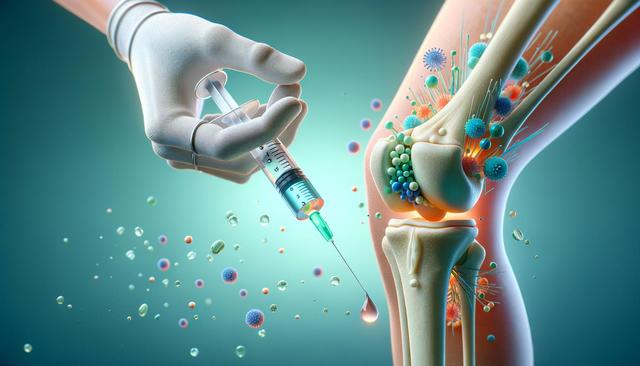What to Expect From Arthritis Injections
Understanding Arthritis Injections
Arthritis injections are a treatment option that can help alleviate pain and reduce inflammation in affected joints. These injections are typically administered directly into the joint, targeting the source of discomfort more precisely than oral medications. There are several types of injections available, each with its own mechanism of action and benefits. Commonly used injections include corticosteroids, hyaluronic acid, and platelet-rich plasma (PRP). Each of these options works differently to provide relief and improve joint function.

Corticosteroid Injections
Corticosteroid injections are among the most frequently used treatments for arthritis. They contain powerful anti-inflammatory agents that can quickly reduce swelling and relieve pain. These injections are particularly effective for individuals experiencing acute flare-ups of arthritis symptoms. The procedure is relatively simple and can be done in a doctor’s office, usually providing relief within a few days.
However, it’s important to note that corticosteroid injections are not a long-term solution. Overuse can lead to potential side effects, such as cartilage damage or weakening of the joint structure. Therefore, healthcare providers typically limit the number of injections a patient can receive within a year.
Hyaluronic Acid Injections
Hyaluronic acid injections, also known as viscosupplementation, are another option for managing arthritis symptoms, particularly in the knee. These injections aim to supplement the natural hyaluronic acid in the joint, which can be depleted in individuals with arthritis. By improving the lubrication and cushioning in the joint, these injections can enhance mobility and reduce pain.
Patients often experience gradual improvement over several weeks, with relief lasting for several months. Hyaluronic acid injections are especially beneficial for those who have not responded well to other treatments or who are not ready for surgery.
Platelet-Rich Plasma (PRP) Therapy
PRP therapy is a newer option that utilizes the patient’s own blood to promote healing and reduce inflammation in arthritic joints. The process involves drawing a small amount of blood, processing it to concentrate the platelets, and then injecting the PRP directly into the affected joint. The growth factors in the platelets can stimulate tissue repair and decrease pain.
While PRP therapy is still being studied, it has shown promise for certain types of arthritis, particularly osteoarthritis. The treatment is generally safe, with minimal risk of side effects since it uses the patient’s own biological material.
What to Expect During and After Treatment
Before receiving arthritis injections, patients will typically undergo a thorough evaluation by their healthcare provider to determine the most suitable treatment option. During the injection procedure, a local anesthetic may be used to minimize discomfort. The process is usually quick, and patients can often resume normal activities shortly afterward.
After the injection, it’s common to experience some temporary soreness or swelling at the injection site. Patients are advised to rest and avoid strenuous activities for a short period to allow the treatment to take effect. Follow-up appointments may be scheduled to assess the treatment’s efficacy and decide on further interventions if necessary.
